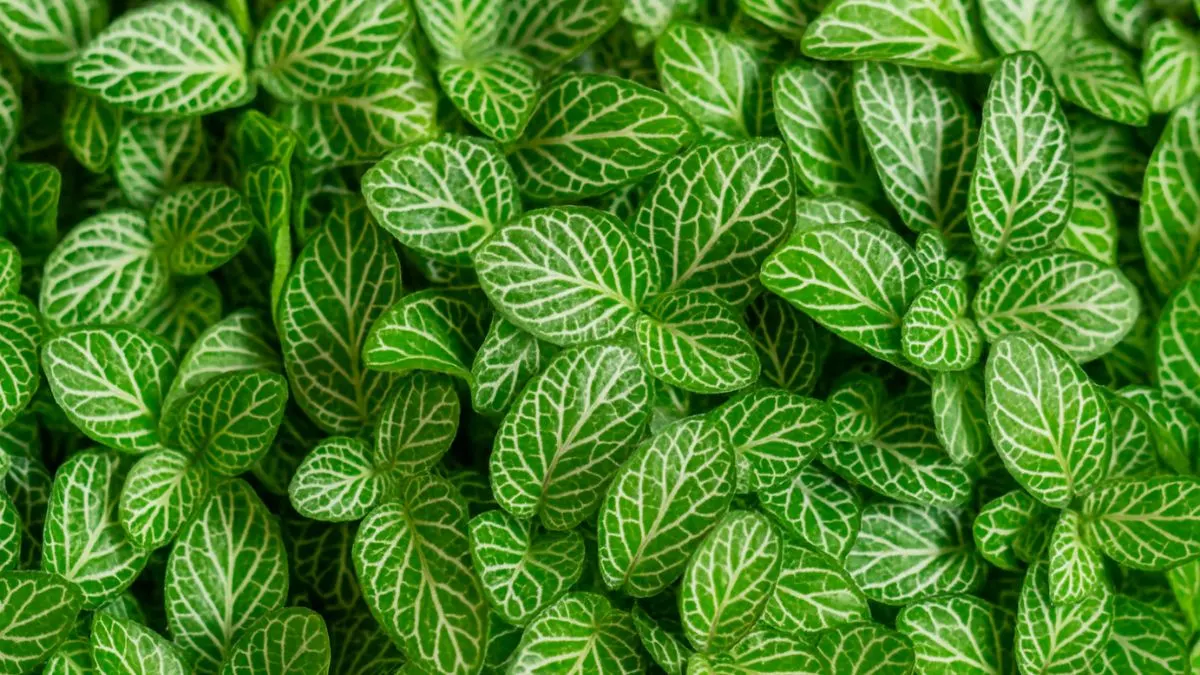If you’re looking for a houseplant that instantly adds drama and beauty to your indoor garden, the Fittonia, or nerve plant, is a perfect choice. Its deeply veined leaves, often in shades of white, pink, or red, make it a living piece of art.
But here’s the catch — Fittonia is often called a “drama queen.” Forget to water it for a day, and you might find it wilting dramatically. Don’t panic, though! With the right care, your Fittonia will bounce back and remain a long-term star in your indoor plant collection.
This guide covers everything you need to know: light, soil, watering, humidity, and propagation, along with my own tips from growing Fittonia indoors in North America.
Understanding the Fittonia

The Fittonia originates from the tropical rainforests of South America. Naturally, this means it’s adapted to indirect (but bright) sunlight, high humidity, and consistently moist soil. Unlike succulents, which thrive on neglect, this beauty requires a bit more attention.
Light Requirements
Light is one of the most critical factors for your Fittonia’s success.
- Bright, indirect light is best, but avoid too much sun. Direct sunlight will scorch the delicate leaves.
- Place the plant near a north- or east-facing window for best results.
- The Fittonia prefer a indirect and subdued light, mimicking their natural rainforest environment.
Personal Tip: In my home, keeping my Fittonia on a shelf away from the direct afternoon sun has made all the difference. Its leaves stay fresh and don’t curl up.
Soil Needs
The soil plays a major role in keeping this plant happy.
- Use a well-draining, peat-based potting mix with perlite or orchid bark mixed in.
- The soil must be rich enough to hold moisture but airy enough to prevent waterlogging.
This balance is essential because while always keeping the soil moist is the only way out, soggy conditions will quickly cause root rot.
Also Read: Mallows: The Multi-Tasking Marvels Your Garden Has Been Missing
Watering Your Fittonia
Watering is where most plant parents go wrong. Fittonia thrives when watered consistently.
- Provide it with bright, indirect light and consistent moisture without letting the soil become soggy.
- Ideally, water every 3–4 days, depending on the season and indoor humidity.
- In summer, when indoor air is dry, increase frequency. In winter, reduce watering slightly.
- Always water at the base and let excess water drain out.
Fun fact: If your Fittonia wilts, don’t panic. A thorough watering usually revives it within a few hours. This dramatic display has earned it the nickname drama queen.
Humidity and Temperature
Being a tropical plant, Fittonia loves warmth and humidity.
- Keep temperatures between 60–80°F (15–26°C).
- Mist the plant regularly or place it on a pebble tray.
- A humidifier near your plant works wonders in colder climates like Canada or northern USA.
If the air is too dry, leaves may turn crispy or curl.
Fertilizing
Feed your Fittonia with a diluted, balanced liquid fertilizer every 4–6 weeks during spring and summer. Avoid overfertilizing; too much can burn the roots.
Propagation
Fittonias are relatively easy to propagate, making them a great plant to share with friends and family.
Steps:
- Cut a healthy stem with at least two leaves.
- Place it in water or moist soil.
- Keep it in bright, indirect light until roots develop (2–3 weeks).
- Transplant into a small pot once roots are visible.
Common Problems and Solutions
- Wilting frequently: This happens if watering is inconsistent. Simply revive with proper moisture.
- Yellowing leaves: Usually a sign of overwatering or poor drainage.
- Crispy edges: Caused by too much direct sunlight or dry air.
Also Read: Kokedama Plants: A Soil Ball, Some Moss, and a Whole Lot of Zen
Quick Care Summary for Fittonia
Aspect |
Requirement |
Light |
Bright, indirect light is best, but avoid too much sun |
Soil |
Peat-based, well-draining soil |
Watering |
Always keeping the soil moist is the only way out |
Humidity |
High humidity, mist or humidifier |
Fertilizer |
Balanced liquid fertilizer every 4–6 weeks |
Propagation |
Stem cuttings in water or soil |
Fittonia in Canada & USA Homes
While native to South America, Fittonia has become one of the most popular indoor plants worldwide. Plant enthusiasts in Canada and the USA often grow it as a table plant or terrarium specimen. Its love for indirect (but bright) sunlight makes it perfect for modern apartments with filtered light.
In fact, I’ve found it thrives best in a glass terrarium setup in dry Canadian winters — the enclosed environment provides the humidity it craves.
Personal Experience
When I first brought home my Fittonia, I underestimated its need for consistent moisture. After a few days of neglect, the leaves drooped so badly I thought it had died. A quick soak, however, brought it back to life in just two hours. This resilience is what makes Fittonia special. Yes, it’s dramatic, but with a little extra love, it rewards you with lush, patterned foliage year-round.
Caring for a Fittonia might feel intimidating at first, but once you understand its needs, it becomes one of the most rewarding plants to grow. With these tips, your Fittonia can flourish beautifully, adding vibrant green and veined charm to your indoor space.
Place it somewhere you can see daily. Its dramatic personality makes it impossible to ignore, and it will quickly become your favorite houseplant.






